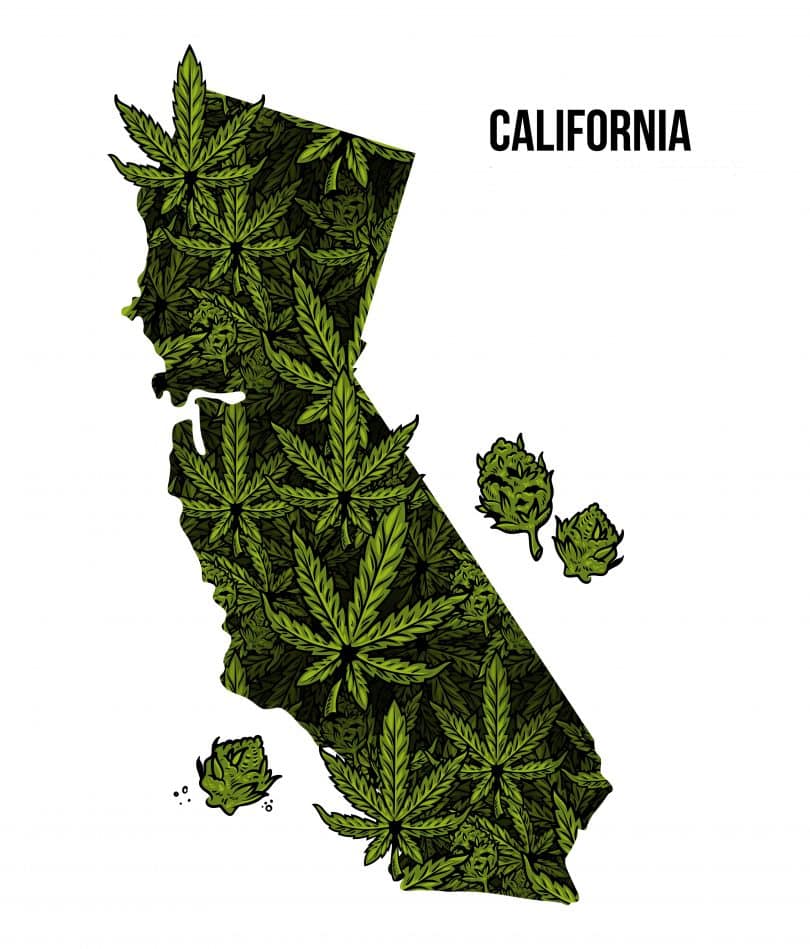It was a big story last year when the state of California finally changed it cannabis tax structure so as to help its ailing weed market. But was enough done? Or even the right things? Now, many months after this tax restructuring, the California cannabis market looks like it might well tank out.
How did California restructure its weed market
California has been weed legal since 2016, and with a regulated market since 2018. Since that time, dispensaries and other cannabis services have sprouted up all over the state. Some legal, and some a part of the black market. While the regular market grew, the black market – which existed before anything was legalized – grew along with it.
When overproduction came into play in a major way in 2022, California ran into big problems. There was so much product floating around that producers had to lower their costs in order to get rid of their stuff, and this meant an inability to profit. However, lower prices by growers didn’t stop the high price of regulatory measures, or taxes; which have been a part of the industry since the beginning.
When California finally went to do something about it, it wasn’t a simple lowering of numbers. Or at least, not enough. Logically, lower taxes and regulatory costs is the answer, but it seems California didn’t want to let go of the majority of the taxes on its weed market, and made changes like these:
- The creation of a tax credit system for certain enterprises
- The expansion of labor rights for industry operators. This means lowering the worker requirement to 10 employees, in order to trigger mandatory labor agreements
- The decision to ensure the excise tax doesn’t rise for three years (it was set to increase in 2024), and stays at the current level – 15%. It also changed who receives the excise tax, from distributors to retailers
- The elimination of the cultivation tax
- The increase of enforcement against unlicensed businesses

The only useful part of this, relates to taxes. Sure, its great to allow for unionization easier, but that’s not where the problem lies. And when it comes to the idea of cracking down on the black market, there’s a disconnect. The black market existed the whole time, as it was there before the legal market. The entire idea of the legal market from the beginning, was to divert from the black market. So making a proclamation now about trying harder sounds like someone didn’t get it from the beginning.
The part that helps is the abolishing of the cultivation tax. According to the previous law, cultivators in the state were paying a flat rate of $10.08 per ounce of dried weed. Now consider the issue of overproduction, and that tax amount becomes horribly absurd. Seemingly a showing of just how much the government is trying to milk this industry for every cent possible.
California AFTER tax-restructuring for weed industry
The biggest reality to California’s problem, is that it started many years ago. Even back six years ago there was talk that the state was growing over eight times the amount that residents use, and that was before the legal recreational market began. Which means this problem has been around for the entirety of the cannabis industry in California…and it took all the way until 2022 to account for it.
Though it was an issue from the beginning, it wasn’t until late 2021– early 2022 that the stories really started coming out about prices dropping extensively for growers. But just because the price for cultivators dropped, it didn’t change the price tag for consumers, or not substantially enough to compete with the black market. The ever-existent black market, which can drop its prices to match a situation much faster, was able to use this to pull back clientele from the legal market.
And so in June of 2022, the new laws were instituted for the weed market in California. No more cultivation tax, but the still present – and high – excise tax. These moves were expected to save the California cannabis industry. Now, nearly a year later, how is it all going?
According to information released by the California Department of Tax and Fee Administration, California brought in $5.3 billion in legal cannabis sales for 2022. In 2021 it was $5.77 billion. This marks the first time the industry has fallen, since its inception in 2018. 2022’s number is an 8.2% decrease from 2021. Which means even after the implementation of these new laws, the market’s trajectory didn’t change.
To give an idea of just how big California’s market is in general, consider that even with this decrease, the state represents about 20% of the overall industry, according to Forbes Magazine. But perhaps looking at it this way undermines the issues at hand. It’s well understood by those within the industry that high taxes, and extreme regulation, are bringing the market down. As per the same Forbes article, small-time operator Johnny Casali, of Huckleberry Hill Farms, said this:
“Most of us farmers have been trying to tell the state [regulators] that the marketplace is imploding. The drop in retail sales means the customer is tired of paying the exorbitant taxes and are now buying it from a friend of a friend or the guy on the corner.”

As an example, Huckleberry Hill Farms did sell all its product for 2022, but did so incurring a $50,000 loss for the year. And it’s not like Casali set up a business model wherein the company would sell everything to end up at a loss. The only real reason for this discrepancy is in the falling price of weed per pound. As of the writing of the Forbes article on February 28th, the price of a pound slipped to $665, a 26% year-over-year decrease.
Said Casali of the upcoming season, “We are already getting orders for this season. But without federal legalization, I don’t know how we fix our supply-and-demand problem.” Perhaps this is in part because its not just about too much weed, but not enough legal dispensaries. Though California has upwards of 40 million residents, there are somewhere in the neighborhood of 1,000 legal dispensaries. If you spend time in the state and think this doesn’t sound right, consider that many around are black market dispensaries.
One of the other issues right now is in reference to federal legalization, or rather, the current lack of it. A producer in one state cannot legally export cannabis to another state. It is, however, being done on the down-low by producers who just want to break even. For everyone playing by the rules, this inability has negative effects on business expansion.
California’s new answer?
California hasn’t been doing this well. It started out by setting impossibly high taxes and expensive regulatory measures, even as it was already seen that overproduction was a thing. Then when it became so much of a thing that legal businesses started tanking out, it introduced legislation that, more than anything, shows a desire to not really change at all. And now, as the problem continues out of hand, California’s next move is just as facepalm-worthy. It wants to focus on corruption.
Focusing on corruption is something that government’s like to do, but they like to do so without being clear about why its happening. Maybe a certain amount of corruption always exists, but when legal operators of any industry are having a hard time, you can expect shadier moves. In this case, it’s a non-working structure set up by the government, which leaves legal operators at a loss. So is it shocking that even those not in the black market, are employing black market tricks?
Things like buying a license under the table, or illegally paying regulators, or even threatening violence are all things that should be expected when legal means can’t prevail. But instead of loosening regulation in a more useful way, and getting rid of taxes in a more useful way, the government, instead, is attempting to focus on the issue of corruption, as if the issue isn’t related to its own ridiculous laws.
According to a March issue of the Los Angeles Times, “state officials are launching an audit aimed at curtailing bribery, conflicts of interest and other misdeeds.” Not instituting workable and realistic regulation, but instead looking to go after those who have stepped out of line due to the non-working regulation in place.
What will this entail? “State auditors plan to identify six jurisdictions with licensed cannabis businesses and review criteria used to approve the permits, reviewing local governments that have been rocked by corruption allegations and others that appear to have fewer such problems.”

This includes looking for licensing rules that are more likely to incite fraud and abuse, and going over samples of permits to ensure that the authorities in question did everything by the book. This is all according to Grant Parks, the state auditor. As per Parks, this could be the basis for new laws and regulations. And while that sentiment is good in theory, it feels more like California has plenty of information telling it to update these things more realistically, already.
The article goes on to push this point, “The state’s dual state and local licensing system is widely blamed for creating a fertile ground for corruption. The Times investigation uncovered a possible six-figure bribe demand by a former councilman in Baldwin Park — later corroborated by a federal plea agreement — and other potential conflicts of interest around the state.”
But again, this focuses more on the fallout of impossible regulation, than simply creating effective regulation to begin with. And it blames the problem on those who bent the rules, rather than the creation of an impossible system. With this thinking…can we really expect anything better to come?
Conclusion
If you take a step back, it appears like California is purposefully tanking out its own weed market; though its certainly hard to see a logic there. In the end, its likely just heaps and heaps of greed we’re looking at. So much, so that even with the problems being screamed by all sides, no real change is happening; just baseless measures.
Hello everyone. Welcome to Cannadelics.com; a news site in the independent world, geared at bringing you the best reporting for the cannabis and hallucinogen landscapes. Hang out with us every day to stay updated on all happenings; and sign up to the Cannadelics Weekly Newsletter, so you’re always first to get the story.









